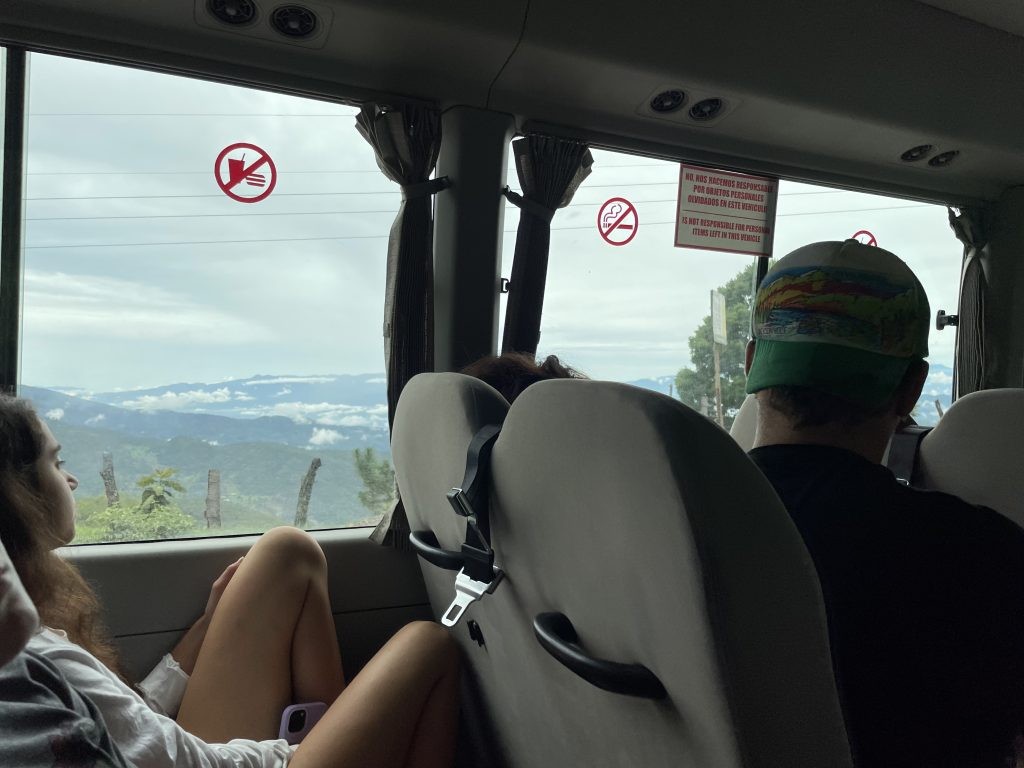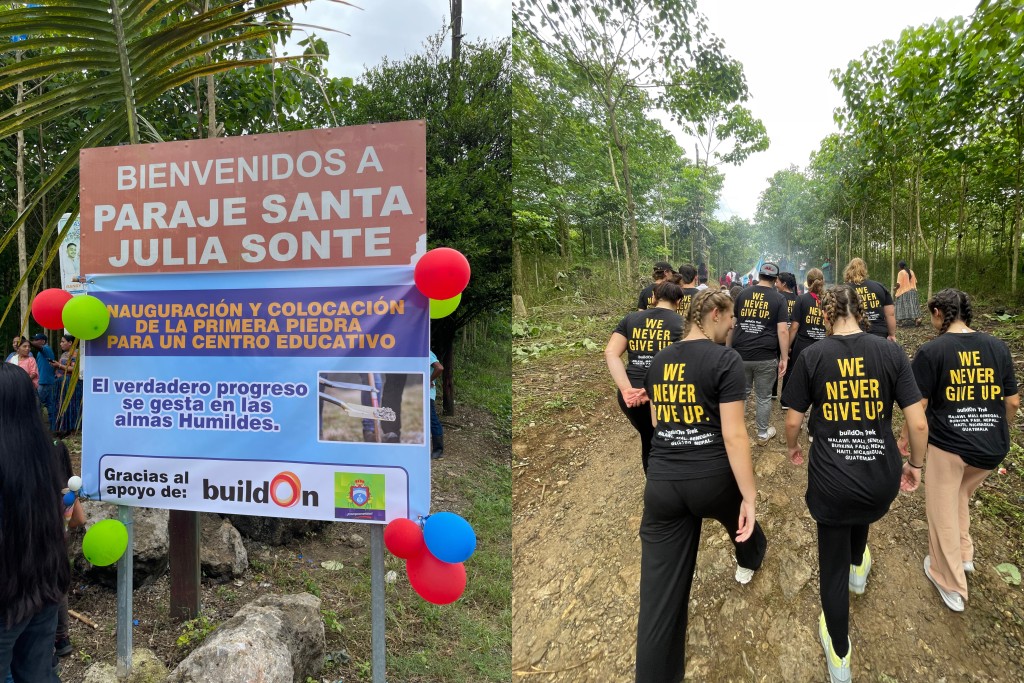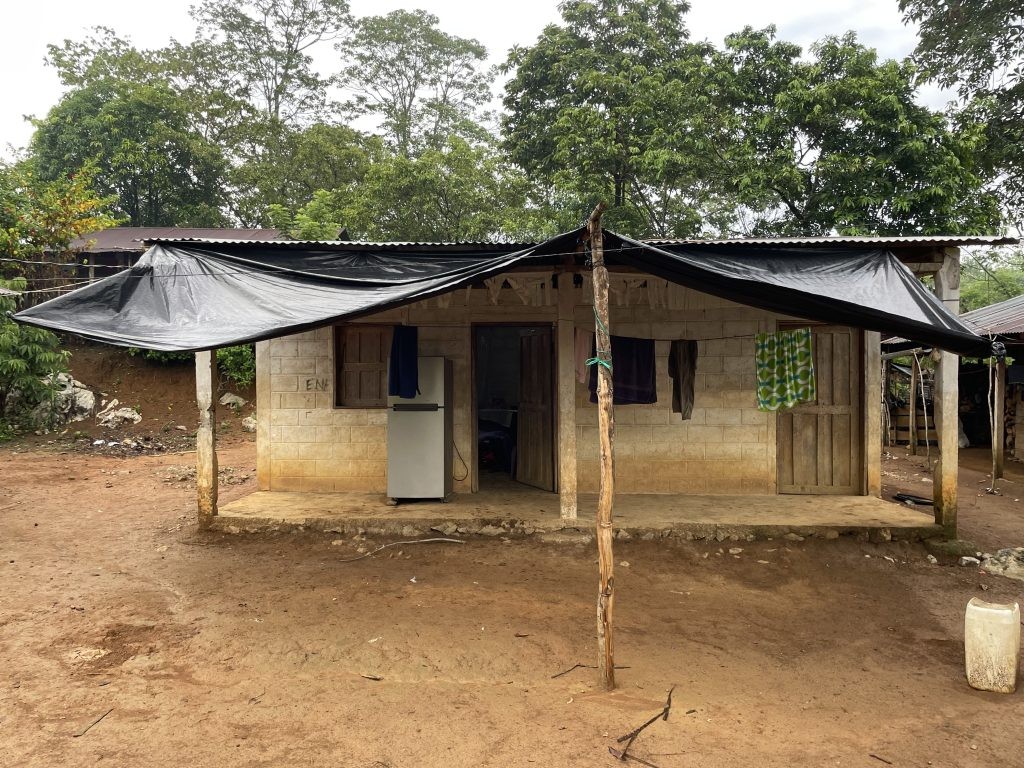Trekking adventures in Vietnam often involve staying in different villages each night, offering a unique cultural immersion. SIXT.VN helps you plan seamless travel experiences with reliable transportation and accommodation options, ensuring a memorable adventure through Vietnam’s stunning landscapes and vibrant communities. Discover Vietnam trekking, village homestays, and cultural tourism.
1. What Is Trekking and Does It Typically Involve Staying in Different Villages Each Night?
Yes, trekking often involves staying in different villages each night, especially on multi-day treks. Trekking is an adventurous journey undertaken on foot in areas where conventional transportation is often unavailable. According to the Vietnam National Administration of Tourism, trekking is a popular activity for tourists seeking to explore the country’s natural beauty and cultural diversity. Staying in different villages provides an immersive experience, allowing trekkers to interact with locals, learn about their traditions, and experience their way of life firsthand. This approach to trekking provides not only physical challenges but also enriching cultural exchanges.
- Multi-Day Treks: These treks are designed to cover significant distances over several days, making it necessary to stay in different locations each night.
- Cultural Immersion: Staying in local villages offers a unique opportunity to experience the culture and traditions of the region.
- Varied Landscapes: Trekking through different villages allows you to see a variety of landscapes, from rice terraces to mountain peaks.
2. What Are the Benefits of Staying in Different Villages During a Trek?
Staying in different villages during a trek offers a range of benefits, enhancing the overall experience. These benefits range from cultural immersion to experiencing diverse landscapes and supporting local communities.
- Cultural Immersion: You get to experience the unique customs, traditions, and lifestyles of different ethnic groups.
- Diverse Landscapes: Each village may offer different views and natural environments.
- Community Support: Your stay contributes directly to the local economy, supporting families and small businesses.
- Authentic Interactions: Engage with locals in a more meaningful way, learning about their history and daily lives.
- Varied Experiences: Each village offers a new set of experiences, from local cuisine to traditional crafts.
3. What Types of Accommodation Are Available When Trekking and Staying in Villages?
Accommodations during treks typically vary from basic to comfortable, depending on the remoteness and infrastructure of the villages. Options generally include homestays, guesthouses, and occasionally, more developed lodging.
- Homestays: Staying with a local family offers an authentic cultural experience. Accommodations are usually simple, with shared sleeping areas and basic amenities.
- Guesthouses: Some villages have small guesthouses that provide more private accommodations, often including a private room and sometimes a private bathroom.
- Basic Amenities: Expect limited access to modern amenities such as electricity, running water, and internet.
- Cultural Exchange: Engage with your hosts, learn about their traditions, and share stories.
- Comfort Levels: While basic, accommodations are generally clean and provide a safe place to rest.
4. How Can SIXT.VN Help with Planning a Trekking Trip That Involves Staying in Different Villages?
SIXT.VN offers comprehensive services to help you plan and execute a trekking trip that involves staying in different villages. Our services are designed to ensure a seamless and enjoyable experience, allowing you to focus on exploring Vietnam’s beauty.
- Customized Itineraries: We create personalized trekking itineraries tailored to your preferences and fitness level.
- Accommodation Booking: We arrange stays in local homestays and guesthouses, ensuring comfortable and authentic experiences.
- Transportation: We provide reliable transportation to and from trekking locations, including airport transfers and local transport.
- Expert Guides: Our experienced guides offer valuable insights into local culture, history, and geography.
- Support: We offer ongoing support throughout your trip, addressing any issues or concerns that may arise.
5. What Should You Pack for a Trekking Trip That Involves Staying in Different Villages?
Packing appropriately is crucial for a comfortable and safe trekking experience. Essential items include appropriate clothing, footwear, and personal care items.
-
Clothing:
- Moisture-wicking shirts: Essential for staying dry and comfortable.
- Thermal layers: Provide warmth in cooler evenings.
- Waterproof jacket: Protects against rain.
- Hiking pants or shorts: Comfortable and durable for trekking.
- Socks: Moisture-wicking socks to prevent blisters.
-
Footwear:
- Hiking boots: Sturdy and broken-in to provide support and prevent injuries.
- Sandals or flip-flops: For relaxing in the evenings.
-
Gear:
- Backpack: Comfortable and appropriately sized for your needs.
- Headlamp or flashlight: Essential for navigating in the dark.
- Water bottle or hydration pack: Stay hydrated during your trek.
- Trekking poles: Provide stability and reduce strain on your knees.
-
Personal Care:
- Sunscreen: Protect your skin from harmful UV rays.
- Insect repellent: Protect against mosquitoes and other insects.
- Toiletries: Pack travel-sized essentials.
- First-aid kit: Include pain relievers, antiseptic wipes, and blister treatment.
-
Miscellaneous:
- Cash: Small denominations for local purchases.
- Camera: Capture the stunning scenery and cultural moments.
- Reusable bags: Reduce plastic waste.
6. What Are Some Popular Trekking Destinations in Vietnam Where You Stay in Different Villages?
Vietnam offers numerous trekking destinations where staying in different villages is a key part of the experience. Popular regions include Sapa, Ha Giang, and Mai Chau, each offering unique cultural and natural attractions.
-
Sapa:
- Highlights: Known for its stunning rice terraces and ethnic minority villages.
- Villages: Home to various ethnic groups, including the Hmong, Dao, and Tay.
- Trekking Experience: Offers treks ranging from easy day hikes to challenging multi-day adventures.
- Cultural Immersion: Experience homestays and learn about the unique customs of the local people.
-
Ha Giang:
- Highlights: Features dramatic landscapes, including the Dong Van Karst Plateau Geopark.
- Villages: Home to ethnic groups such as the Hmong, Tay, and Dzao.
- Trekking Experience: Offers challenging treks with breathtaking views and remote village visits.
- Unique Culture: Participate in local markets and festivals.
-
Mai Chau:
- Highlights: Known for its peaceful valleys, rice paddies, and traditional stilt houses.
- Villages: Home to the White Thai ethnic group.
- Trekking Experience: Offers easier treks suitable for families and beginners.
- Relaxing Atmosphere: Enjoy the tranquility of the countryside.
-
Pu Luong Nature Reserve:
- Highlights: Lush forests, terraced rice fields, and serene villages.
- Villages: Home to the Thai and Muong ethnic groups.
- Trekking Experience: Offers a mix of easy and moderate treks with stunning natural beauty.
- Eco-Tourism: Experience sustainable tourism practices and support local communities.
7. What Cultural Etiquette Should You Be Aware of When Staying in Vietnamese Villages?
Respecting local customs and traditions is crucial when staying in Vietnamese villages. Understanding and practicing cultural etiquette enhances your experience and fosters positive relationships with the community.
- Dress Modestly: Wear respectful clothing, especially when visiting religious sites.
- Remove Shoes: Take off your shoes when entering someone’s home.
- Ask Permission: Always ask before taking photos of people or their property.
- Respect Elders: Show respect to elders by greeting them first and listening to their advice.
- Avoid Public Displays of Affection: Refrain from excessive displays of affection in public.
- Gift-Giving: Small gifts are appreciated but not required. Local products are often a good choice.
- Dining Etiquette: Wait for the host to begin eating before you start. Use chopsticks properly and avoid sticking them upright in your rice bowl.
- Learn Basic Phrases: Learning a few basic Vietnamese phrases can go a long way in showing respect and interest in the local culture.
- Be Mindful of Noise: Keep noise levels down, especially during quiet hours.
- Support Local Businesses: Purchase goods and services from local vendors to support the community.
8. Are There Any Health and Safety Precautions to Consider When Trekking and Staying in Villages?
Yes, several health and safety precautions should be considered to ensure a safe and enjoyable trekking experience.
- Vaccinations: Ensure you are up-to-date with recommended vaccinations for Vietnam. Consult your doctor well in advance of your trip.
- Travel Insurance: Purchase comprehensive travel insurance that covers medical emergencies, evacuation, and trip cancellations.
- Altitude Sickness: If trekking at high altitudes, be aware of the symptoms of altitude sickness and ascend gradually.
- Food and Water Safety: Drink only bottled or purified water. Eat at reputable establishments or try food cooked by your homestay hosts.
- Insect Protection: Use insect repellent to protect against mosquitoes and other insects. Consider using a mosquito net while sleeping.
- Sun Protection: Wear sunscreen, a hat, and sunglasses to protect yourself from the sun.
- Physical Fitness: Be in good physical condition and adequately prepared for the demands of trekking.
- First-Aid Kit: Carry a well-stocked first-aid kit with essential supplies and medications.
- Local Guides: Hire experienced local guides who are familiar with the terrain and can provide assistance in case of emergencies.
- Stay Informed: Keep up-to-date with local weather conditions and any potential hazards.
9. How Does Staying in Different Villages Contribute to Sustainable Tourism in Vietnam?
Staying in different villages contributes significantly to sustainable tourism by supporting local economies, preserving cultural heritage, and promoting responsible travel practices.
-
Economic Benefits:
- Direct Income: Homestays and local businesses receive direct income from tourism.
- Job Creation: Tourism creates employment opportunities for villagers.
- Local Products: Tourists purchase local products and crafts, supporting traditional skills and livelihoods.
-
Cultural Preservation:
- Cultural Exchange: Tourism encourages the preservation of local customs, traditions, and languages through cultural exchange.
- Heritage Protection: Communities are incentivized to protect their cultural heritage sites and practices.
-
Environmental Conservation:
- Awareness: Tourism raises awareness about the importance of environmental conservation.
- Eco-Friendly Practices: Sustainable tourism promotes eco-friendly practices such as waste reduction, water conservation, and responsible trekking.
- Community Involvement: Local communities are involved in conservation efforts, ensuring the protection of natural resources.
-
Responsible Travel Practices:
- Respect Local Culture: Tourists are encouraged to respect local customs and traditions.
- Minimize Environmental Impact: Responsible trekking practices minimize environmental impact.
- Support Local Communities: Tourists support local communities by purchasing goods and services from local vendors.
10. What Unique Experiences Can You Expect When Staying in Different Villages During a Trek?
Staying in different villages during a trek in Vietnam offers a plethora of unique and unforgettable experiences, enriching your understanding of the country’s diverse cultures and landscapes.
-
Cultural Immersion:
- Traditional Meals: Share meals with local families and savor authentic Vietnamese cuisine.
- Cultural Performances: Attend traditional music and dance performances.
- Local Festivals: Participate in local festivals and celebrations.
- Handicraft Workshops: Learn traditional crafts such as weaving, embroidery, and pottery.
-
Interaction with Locals:
- Homestays: Stay with local families and experience their daily lives.
- Language Exchange: Learn basic Vietnamese phrases and teach locals some of your language.
- Storytelling: Listen to stories and legends passed down through generations.
-
Exploration of Natural Beauty:
- Scenic Views: Trek through stunning landscapes, including rice terraces, mountains, and valleys.
- Hidden Gems: Discover hidden waterfalls, caves, and viewpoints.
- Wildlife Encounters: Observe local wildlife and learn about the region’s biodiversity.
-
Personal Growth:
- Challenge Yourself: Step outside your comfort zone and challenge yourself physically and mentally.
- Gain New Perspectives: Develop a deeper appreciation for different cultures and ways of life.
- Create Lasting Memories: Forge lasting memories and connections with the people and places you encounter.
Embark on your unforgettable trekking adventure with SIXT.VN. We take care of all the details, from airport transfers to comfortable accommodations, ensuring a seamless and enriching experience. Our expert guides will lead you through breathtaking landscapes, introduce you to vibrant cultures, and create memories that will last a lifetime. Contact SIXT.VN today via Hotline/Whatsapp: +84 986 244 358 or visit our website SIXT.VN at Address: 260 Cau Giay, Hanoi, Vietnam to start planning your dream trekking trip. Discover the beauty of Vietnam with SIXT.VN.
 Woman enjoying a scenic view of rice terraces in Sapa Vietnam
Woman enjoying a scenic view of rice terraces in Sapa Vietnam
 A welcome parade organized by the local community in Vietnam
A welcome parade organized by the local community in Vietnam
 Simple sleeping quarters during a trek
Simple sleeping quarters during a trek
FAQ About Trekking and Village Stays in Vietnam
-
Is trekking in Vietnam safe?
- Yes, trekking in Vietnam is generally safe, but it’s important to take necessary precautions such as hiring a local guide, staying on marked trails, and being aware of weather conditions.
-
What is the best time to go trekking in Vietnam?
- The best time to go trekking in Vietnam is during the dry season, which typically runs from November to April.
-
Do I need a visa to enter Vietnam?
- Most foreign visitors need a visa to enter Vietnam. Check the latest visa requirements based on your nationality.
-
What are the common challenges trekkers face in Vietnam?
- Common challenges include language barriers, navigating unfamiliar terrain, and adapting to local customs and food.
-
How do I find a reliable trekking tour operator in Vietnam?
- Look for tour operators with good reviews, experienced guides, and a commitment to sustainable tourism practices, such as SIXT.VN.
-
What should I do if I get sick during a trek?
- Inform your guide immediately and seek medical attention. Carry a basic first-aid kit and any necessary medications.
-
Can I trek independently in Vietnam, or do I need a guide?
- While it’s possible to trek independently, hiring a local guide is recommended for safety, cultural insights, and navigation.
-
Are there ATMs in remote villages?
- ATMs are generally not available in remote villages, so carry enough cash for your needs.
-
How can I minimize my environmental impact while trekking?
- Use reusable water bottles, pack out all trash, stay on marked trails, and respect local wildlife and vegetation.
-
What kind of food can I expect to eat in Vietnamese villages?
- Expect to eat local dishes made with fresh ingredients, such as rice, noodles, vegetables, and meats. Be open to trying new flavors and dishes.



